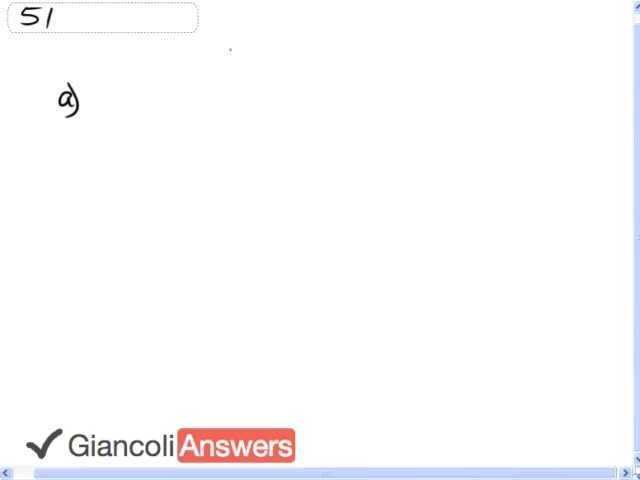
b) away from the moon

In order to watch this solution you need to have a subscription.
Let’s draw a picture, we’ll draw the moon and the astronaut and the forces that the astronaut experiences, he’ll experience gravity toward the moon and he must be experiencing a normal force away from the moon and since he’s not accelerating there must be a force balancing the gravity and this normal force is the perceived weight is equal to the magnitude of the normal force, the direction of your perceived weight will be opposite the normal force. When you’re standing on earth your perceived weight is downwards towards the earth whereas the normal force is directed upwards. So your perceived weight will be equal to the magnitude of the normal force and in opposite direction to the normal force. So based on that we’ll say that the normal force or the weight equals gravity: weight ‘w’ equals ‘g’ times mass of the astronaut ‘ma’ times the mass of the moon ‘mm’ divided by the distance from the moon 'r' squared. Substituting in the numbers we get our answer: six point six seven times ten raised to the power minus eleven times seventy five kilograms times seven point three five times ten raised to the power twenty two kilograms divided by four thousand two hundred times ten raised to power three squared and that equals twenty point eight four, or twenty one newtons and this perceived weight is towards the moon. In part b we’ll draw a picture again, we’ll have the moon and the astronaut and he’s experiencing a force of gravity towards the moon and normal force away from the moon, the force of gravity being larger in this case so we should draw that arrow even larger because he’s accelerating towards the moon. Force of gravity ‘Fg’ is positive because it’s towards the moon minus the weight ‘w’ which is the normal force which is in the opposite direction and that equals mass times acceleration. So we’ll solve for the weight: ‘w’ is force of gravity minus mass times acceleration which is going to be the mass of the astronaut times the gravity formula, so we have: ‘ma’ times in bracket ‘G’ times ‘mm’ divided by 'r' squared minus ‘a’ and this gives us seventy five kilograms times six point six seven times ten raised to power minus eleven times seven point three five times ten raised to power twenty two kilograms divided by four thousand two hundred times ten raised to power three meters squared minus two point nine meters per second squared, that’s the acceleration we’re given towards the moon, and that equals negative one hundred and ninety seven newton and that negative means that the normal force is actually in the opposite direction to what we drew in our picture. So our answer is going to be two point zero times ten raised to power two newtons away from the moon. The direction of your perceived weight is in the opposite direction to the normal force so that means the perceived weight is away from the moon so the sensation for this astronaut will be that there is something pulling them away from the moon, which is weird because you would expect the sensation of being pulled towards the moon because there's gravity. There's something else that must be at player because there's the rocket boosters which must be responsible for accelerating them towards the moon so their perception will be that the weight will be away from the moon. For the 5th Edition the astronaut’s mass is seventy kilograms, so that will mean that the apparent weight in part a will be twenty newtons and that also means that the answer would be one point eight times ten raised to power two.